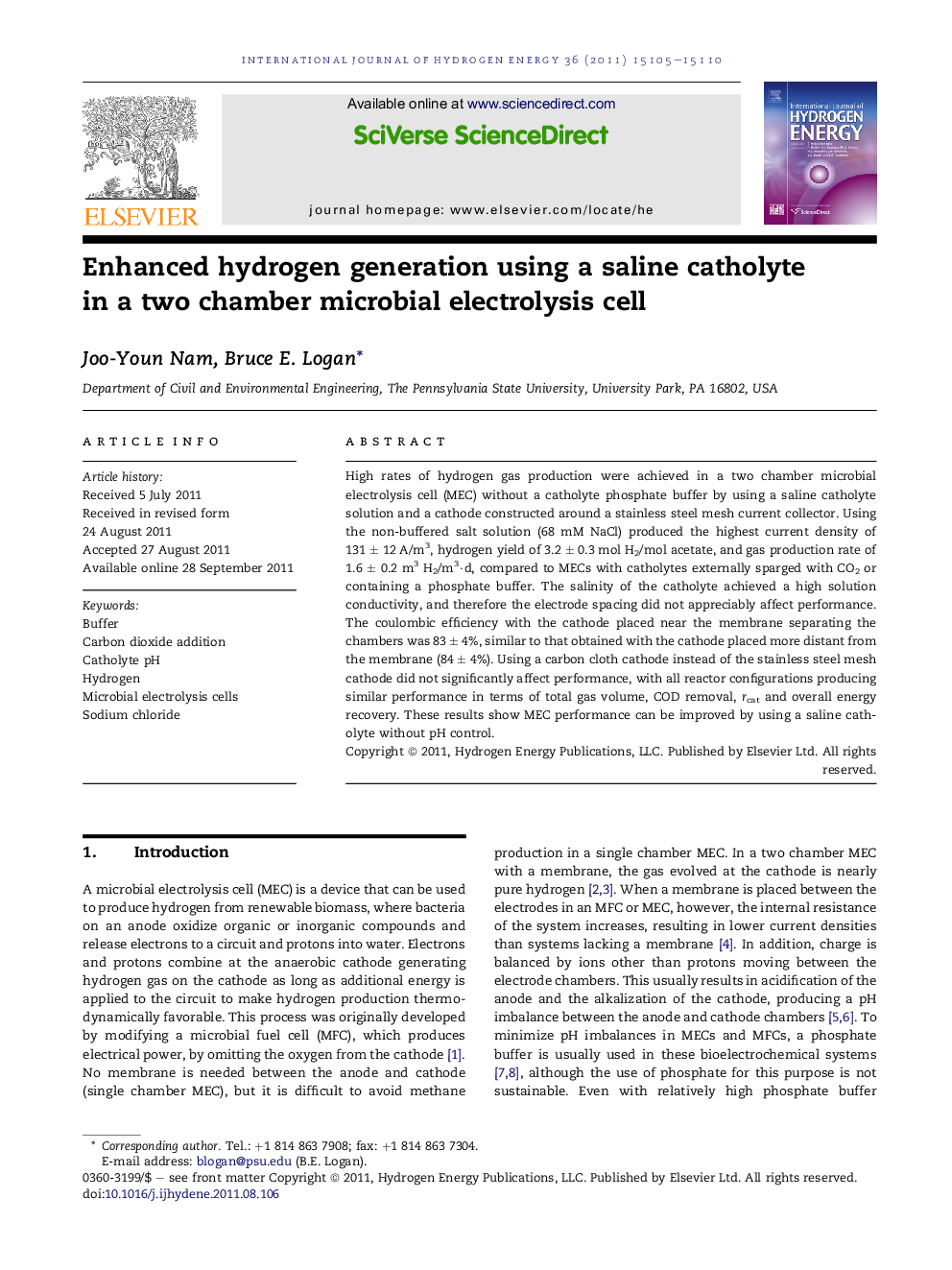| Article ID | Journal | Published Year | Pages | File Type |
|---|---|---|---|---|
| 1271801 | International Journal of Hydrogen Energy | 2011 | 6 Pages |
High rates of hydrogen gas production were achieved in a two chamber microbial electrolysis cell (MEC) without a catholyte phosphate buffer by using a saline catholyte solution and a cathode constructed around a stainless steel mesh current collector. Using the non-buffered salt solution (68 mM NaCl) produced the highest current density of 131 ± 12 A/m3, hydrogen yield of 3.2 ± 0.3 mol H2/mol acetate, and gas production rate of 1.6 ± 0.2 m3 H2/m3·d, compared to MECs with catholytes externally sparged with CO2 or containing a phosphate buffer. The salinity of the catholyte achieved a high solution conductivity, and therefore the electrode spacing did not appreciably affect performance. The coulombic efficiency with the cathode placed near the membrane separating the chambers was 83 ± 4%, similar to that obtained with the cathode placed more distant from the membrane (84 ± 4%). Using a carbon cloth cathode instead of the stainless steel mesh cathode did not significantly affect performance, with all reactor configurations producing similar performance in terms of total gas volume, COD removal, rcat and overall energy recovery. These results show MEC performance can be improved by using a saline catholyte without pH control.
► A highly saline catholyte was examined as an alternative to a phosphate buffered solution. ► MEC performance was improved by using the highly saline catholyte without pH control. ► Electrode spacing did not appreciably affect performance under these conditions. ► A cathode built around a stainless steel mesh had similar performance to carbon cloth.
